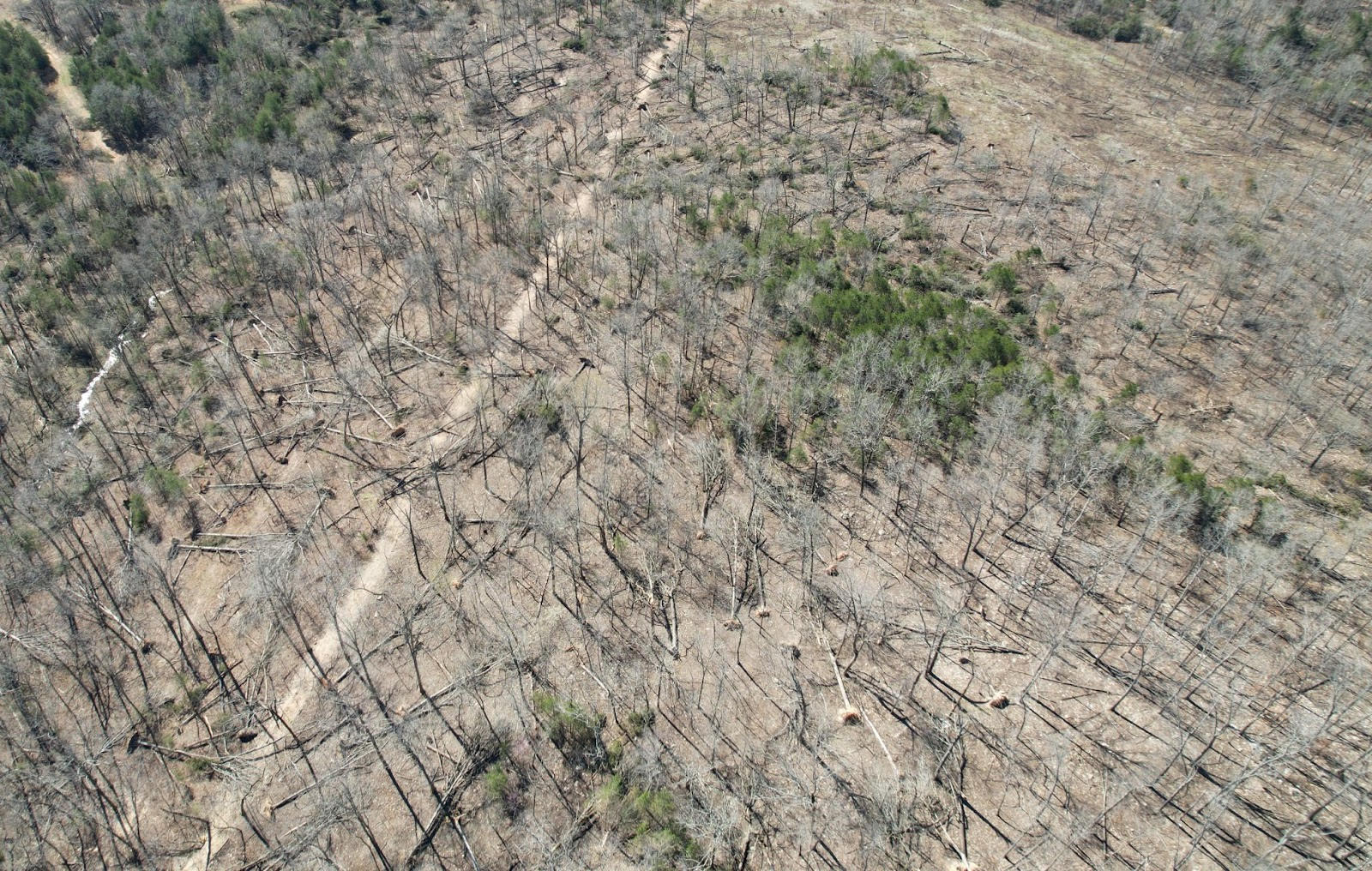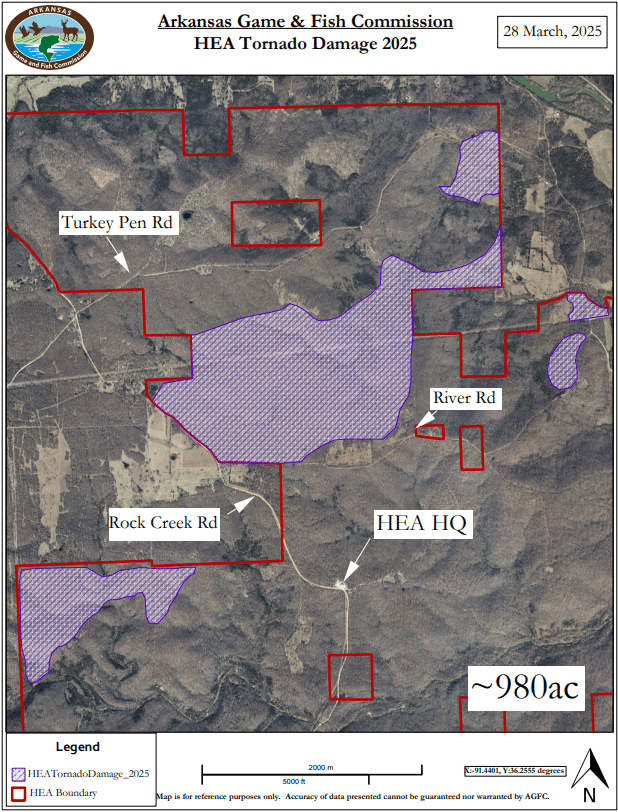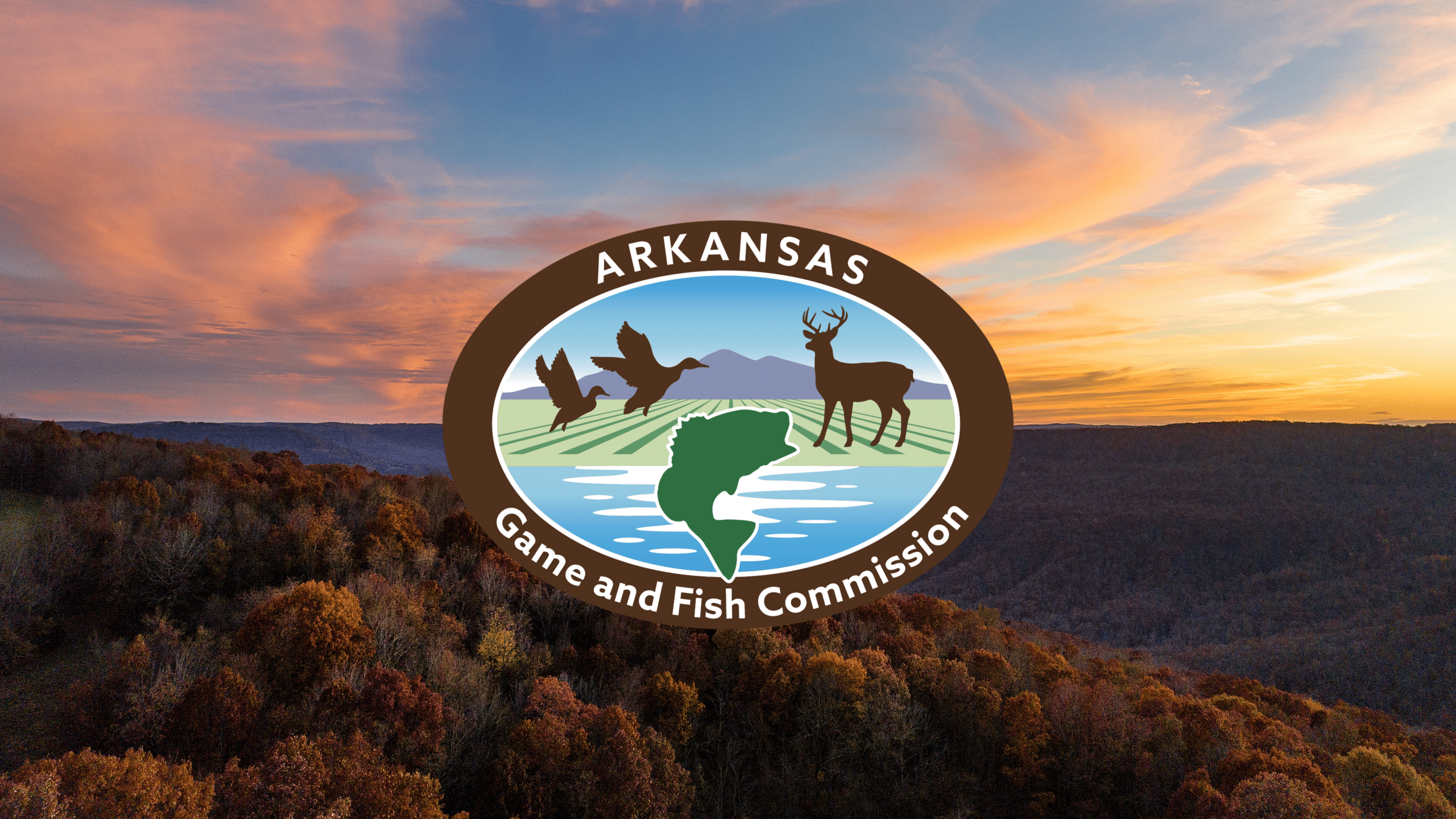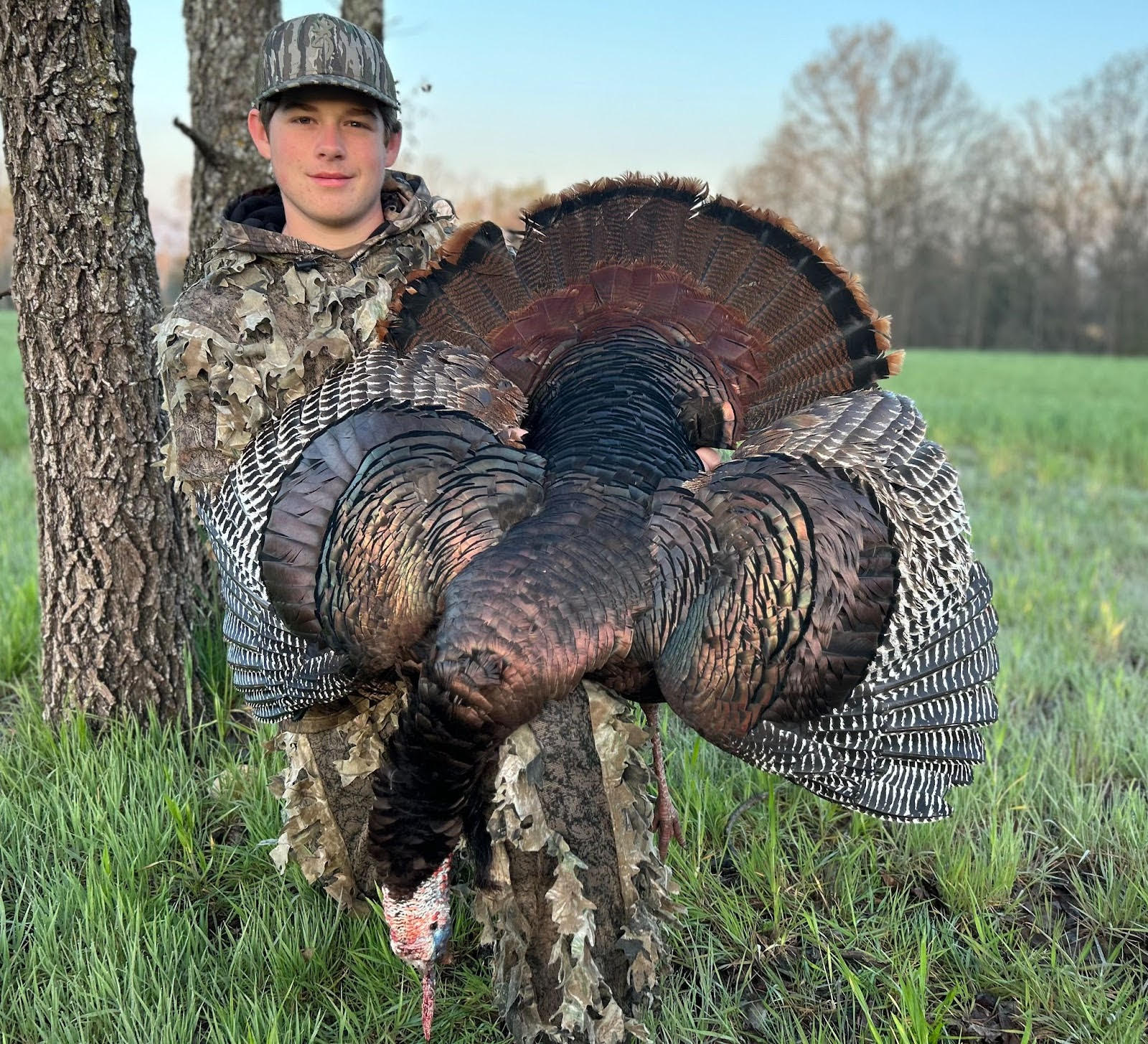Scars from March tornadoes unattractive, not total loss for wildlife
ON 04-15-2025

HARDY — The twin EF4 tornadoes that ripped through portions of northeastern Arkansas on March 14 will leave a lasting impression on one of the more popular local hunting destinations. Unlike the devastation inflicted on homes and local businesses, the storm’s result may be a bit of a mixed bag regarding habitat management on the area.
Habitat biologists with the Arkansas Game and Fish Commission estimate roughly 980 forested acres of the 13,939-acre Harold E. Alexander Wildlife Management Area saw damage from winds in excess of 190 miles per hour during the storm. Trees were uprooted and blown over, blocking roads and removing mast-producing oaks and other tree species beneficial to wildlife.
AGFC Habitat Biologist Tucker Collins has spent the last few weeks mapping the damaged area on the ground and using drones.
“The level of damage varies throughout the WMA, but it’s not total devastation,” Collins said. “Even the corner of Rock Creek Road and River Road, where some of the heaviest damage can be seen, was not a total loss as there are still a fair number of trees standing.”

AGFC Habitat Program Coordinator Rob Willey says plans are underway to perform salvage operations to help clear windthrown trees and recover some of the value of the trees lost.
“What little money is generated from the salvage operation is required to go right back into habitat management in the AGFC’s WMA system,” Willey said. “The operation will also increase safety and access on the areas affected, removing damaged trees.”
The damage isn’t all bad news, according to Collins. Many areas damaged by the storm needed thinning to open the forest canopy and let sunlight penetrate to the forest floor, stimulating the growth of grasses and seed-producing plants attractive to wildlife.
“I think overall the storm probably moved most of what it hit into what is considered desired forest conditions for that type,” Collins said. “Some areas that were already at desired conditions regarding forest density may be below ideal conditions, but that isn’t necessarily a bad thing either. You really want some stands below those desired conditions, some at desired conditions and some growing out of those desired conditions to create the best matrix of habitat possible for multiple species.
“The main issue is the additional rush the storm causes to find and work with contractors for the salvage cut before the trees are not worth the contractor’s effort to recover,” Collins said. “Hunters going out for turkey season may also find these areas more difficult to access in the short term as well.”
AGFC Turkey Program Coordinator David Moscicki says storms like this can have some short-term effects on turkey populations in the immediate area.
“I was able to analyze the effects of hurricanes on wild turkey populations during my graduate research for North Carolina State University,” Moscicki said. “We were monitoring turkeys with GPS and radio transmitters in southeast Texas when Hurricane Harvey rolled through the area in 2017. We lost about 8 percent of the tagged birds to weather-related causes. We also analyzed the effects of Hurricane Matthew, a storm in 2016 that coincided with another research project that was monitoring turkeys in South Carolina with GPS transmitters and saw a 5 percent loss in the tagged birds from that storm.
“Tornadoes may be more concentrated, but it’s just one more danger turkeys face in the woods,” Moscicki said. “Between nest predators, larger predators, cold and wet springs, and the constant struggle to find suitable habitat, the life of a turkey is hard, so we must do everything we can to coordinate our hunting seasons and habitat management to give them the best chance to thrive.”
####
CUTLINES:
STORM DAMAGE
Tornadoes that ripped through Arkansas in mid-March toppled many mature hardwood trees on Harold E. Alexander Spring River Wildlife Management Area in Northeast Arkansas. AGFC photo courtesy Tucker Collins.
MAP
AGFC Habitat Biologist Tucker Collins has mapped the damage on foot and by using drones to get a better picture of the damage and prepare for salvage operations.
Recent News

AGFC Commissioner Meeting Notice
Apr. 15, 2025
Subscribe to Our Weekly Newsletter E-mails
Don’t miss another issue. Sign up now to receive the AGFC Wildlife Weekly Newsletter in your mailbox every Wednesday afternoon (Waterfowl Reports are published weekly during waterfowl season and periodically outside the season). Fishing Reports arrive on Thursdays. Fill in the following fields and hit submit. Thanks, and welcome!

